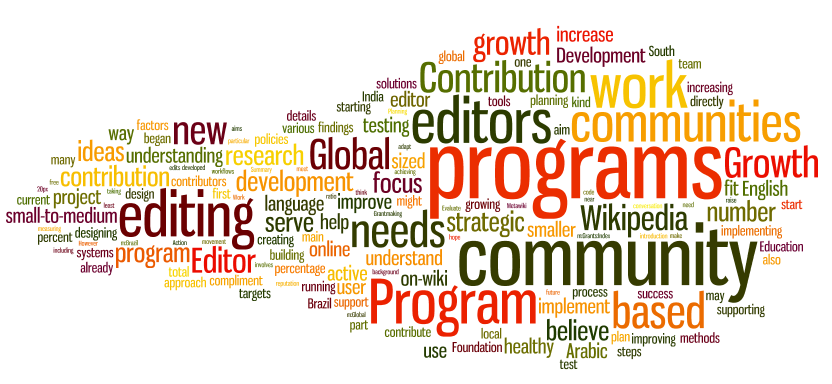Imagine your website as a vessel adrift in the vast digital ocean, where keywords are the stars guiding you to the shores of visibility. You're about to embark on a crucial journey to master the art of SEO keyword research. This handbook is your compass, helping you navigate through the complexities of identifying your target audience, analyzing competitor keywords, and harnessing the power of keyword research tools.
With this guide, you'll learn how to assess the relevance and difficulty of your chosen keywords and integrate them strategically into your content. You'll also discover how to monitor your keyword performance, ensuring your site doesn't just float aimlessly, but sails smoothly towards the horizon of search engine success.




Key Takeaways
- Keyword research is crucial for informing content strategy and identifying target audience search habits.
- Understanding the target audience's demographics and search intent helps in selecting the right keywords and creating relevant content.
- Analyzing audience demographics and aligning keywords with their needs and interests increases the chances of attracting engaged users.
- Analyzing competitor audience insights helps identify gaps and opportunities, allowing for a tailored keyword and content strategy to surpass competitors' reach.
Understanding SEO Keyword Research
Delving into SEO keyword research, you'll uncover the targeted terms and phrases that can elevate your website's visibility on search engines. This process is crucial because it informs your content strategy, letting you know what your audience is searching for and how they're doing it. You'll start by brainstorming a list of topics relevant to your niche. From there, you'll use tools like Google Keyword Planner or SEMrush to find the actual search terms people are using. You're not just looking for any words; you're after the ones with a significant search volume and, ideally, lower competition. This sweet spot means you've got a better chance of ranking higher. Next, you'll analyze the intent behind the keywords. Are users looking to buy, to learn, or to solve a problem? Understanding this will shape the type of content you'll create. Remember, it's not just about single keywords. Long-tail keywords, which are longer and more specific phrases, can attract more qualified traffic. They often have less competition and can better match user intent.
Identifying Your Target Audience
Before you can effectively choose keywords, you've got to know who you're talking to. Take a close look at audience demographics to tailor your content precisely, and understand their search intent to meet their needs. Analyzing your competitors' audience can also reveal gaps and opportunities for your SEO strategy.Audience Demographics Analysis
To effectively tailor your keyword strategy, you'll need to understand the age, gender, interests, and location of your target audience through audience demographics analysis. This crucial step ensures your content resonates with the people most likely to engage with your brand or product. Start by gathering data from your website analytics, social media insights, or market research surveys. Look for patterns and trends that shed light on who your audience truly is. Are they predominantly young adults interested in tech? Parents in search of family-friendly activities? Once you've pinpointed these demographics, you can refine your keywords to align with their search habits, increasing the chances they'll stumble upon your site just when they need it.Search Intent Understanding
Why are your prospective customers turning to search engines in the first place? They're seeking answers, products, or services, and your goal is to understand their intent. Start by dividing search queries into types: informational, navigational, transactional, or commercial investigation. You need to match your content with their expectations. For instance, if they're looking for a 'how-to' guide, they're not ready to buy – they want information. Tailor your content to answer their questions thoroughly. When they search for a specific product, they might be closer to a purchase. That's your cue to highlight your product's features and benefits, nudging them towards a decision. Identifying user intent isn't just about keywords; it's about aligning your content with what your audience is truly searching for.
Competitor Audience Insight
While you're analyzing keywords, it's crucial to also investigate who your competitors are targeting to ensure your content resonates with the right audience. Start by checking out their websites and social media profiles. Notice the language they use and the topics they cover. Are they speaking to professionals, hobbyists, or a general audience? Look at their customer reviews and feedback to pinpoint the demographics they appeal to. Next, use tools like Alexa or SimilarWeb to dive into their audience's interests and online behavior. This data will help you understand the age, location, and even the devices your competitors' audience prefers. Armed with this insight, you can tailor your keywords and content strategy to not only match but exceed their reach, capturing the attention of your ideal consumers.Analyzing Competitor Keywords
You'll gain invaluable insights by scrutinizing the keywords your competitors are ranking for. This process reveals not only the terms they're targeting but also their content strategy and customer focus. By understanding the keywords that are driving traffic to their sites, you can identify gaps in your own strategy and opportunities to differentiate your content. Here's how you can effectively analyze your competitors' keywords:- Identify Competitors: Start with a list of your direct and indirect competitors. Use tools like SEMrush or Ahrefs to see who's ranking in your niche.
- Analyze Their Keywords: Look at the keywords they rank for, especially those with high search volume and low competition. Note the keywords that are relevant to your business.
- Check Their Content: See how they're using these keywords in their content. Are they blog posts, product pages, or informational guides?
- Look for Trends: Keep an eye out for patterns in their keyword usage that could indicate successful strategies or emerging market trends.
Utilizing Keyword Research Tools
Several keyword research tools can streamline your SEO efforts, helping you uncover valuable search terms relevant to your niche. These tools range from free options like Google's Keyword Planner to premium services such as Kwestify, Ahrefs and SEMrush. They're indispensable for identifying keywords that can attract more traffic to your website. You'll want to start with a tool that suits your budget and needs. Free tools are great for getting started, whereas paid ones offer more advanced features like search volume trends, competitive analysis, and keyword difficulty scores. When you're using these tools, you're not just looking for high-volume terms; you're also seeking out long-tail keywords with less competition but high conversion potential. Don't forget to consider user intent. Keywords should align with what your potential customers are searching for. Tools like AnswerThePublic can provide insight into the questions people are asking, allowing you to tailor your content accordingly. It's not just about finding the right keywords, though; it's about understanding how to use them. Look at the data these tools provide and make informed decisions to craft content that not only ranks well but also resonates with your audience. Remember, the goal is to drive relevant traffic that converts, not just to rank for any keyword.Assessing Keyword Relevance
You've gathered your keywords, but how do you know they're the right fit for your content? It's crucial to assess whether these terms align with what your potential visitors are seeking.
User Intent Alignment
Understanding user intent is crucial when you're assessing the relevance of keywords for your SEO strategy. It's about ensuring your content aligns with what users are actually looking for when they type a query into a search engine. Here's a quick guide to help you gauge user intent:- Identify the Type of Intent: Determine whether users are seeking information, looking to make a purchase, or finding a specific website.
- Analyze the Search Queries: Look at the language used in search queries to infer the level of user intent.
- Check the SERP Features: Examine what types of content (e.g., videos, articles, product listings) are ranking to understand user expectations.
- Use Tools: Leverage keyword research tools that can suggest the intent behind the keywords.
Search Volume Analysis
While you explore potential keywords, it's essential to analyze search volume to gauge their relevance to your audience. This metric indicates how often people search for a specific term within a given timeframe. High search volumes mean more potential traffic, but also more competition. Conversely, keywords with low search volumes mightn't drive significant traffic, yet they could be highly relevant and easier to rank for. You'll want to find a balance, targeting keywords that are searched often enough to drive traffic but not so competitive that you can't rank. Use tools like Google's Keyword Planner or SEMrush to get accurate search volume data.Competitor Keyword Comparison
As you delve into keyword research, it's crucial to consider what terms your competitors are ranking for to assess the relevance of these keywords to your own strategy. Here's how to perform a competitor keyword comparison effectively:- Identify Competitors: Pinpoint who your direct SEO competitors are, looking at those who rank well in your niche.
- Analyze Their Keywords: Use tools like SEMrush, Kwestify or Ahrefs to see the keywords for which your competitors rank.
- Evaluate Keyword Overlaps: Spot common keywords between your competitors and your site to find gaps or opportunities.
- Prioritize by Relevance: Select keywords that are highly relevant to your content and have the potential to drive targeted traffic.

Evaluating Keyword Difficulty
Keyword difficulty is a metric you'll need to assess to determine how challenging it will be to rank for specific search terms. It's a crucial aspect of your SEO journey because it informs you how much effort you'll need to outrank your competition. But how do you evaluate keyword difficulty? Start by using SEO tools that analyze the strength of the domains currently ranking for your desired keywords. These tools often provide a difficulty score based on various factors, including domain authority, page authority, and backlink profiles. Remember, a higher score usually means more effort is needed to rank well. You should also look at the search results themselves. If the top spots are dominated by well-established websites with strong brand recognition, you're up against stiff competition. On the other hand, if you see forums, question pages like Quora, or lower-quality sites, the door is open for you to move in with high-quality content and a solid SEO strategy. Don't let a high keyword difficulty discourage you. Sometimes, these keywords are worth the extra effort due to their potential for high traffic and conversions. Just make sure you're prepared to invest the necessary resources.Integrating Keywords Strategically
Once you've assessed keyword difficulty, it's crucial to integrate those keywords into your content strategically to maximize their potential. It's not just about sprinkling them throughout your text; it's about making them feel natural and ensuring they align with user intent. Here's how to get it right:- Place Keywords in High-Impact Positions: Title tags and headers carry more weight. Make sure your primary keywords feature here.
- Use Keywords in Meta Descriptions: While not a ranking factor, a compelling meta description with keywords can improve click-through rates.
- Balance Keyword Density: Aim for a natural flow. Don't overstuff your content with keywords; it can harm readability and SEO.
- Leverage LSI Keywords: Include Latent Semantic Indexing (LSI) keywords to provide context and support the main keywords.

